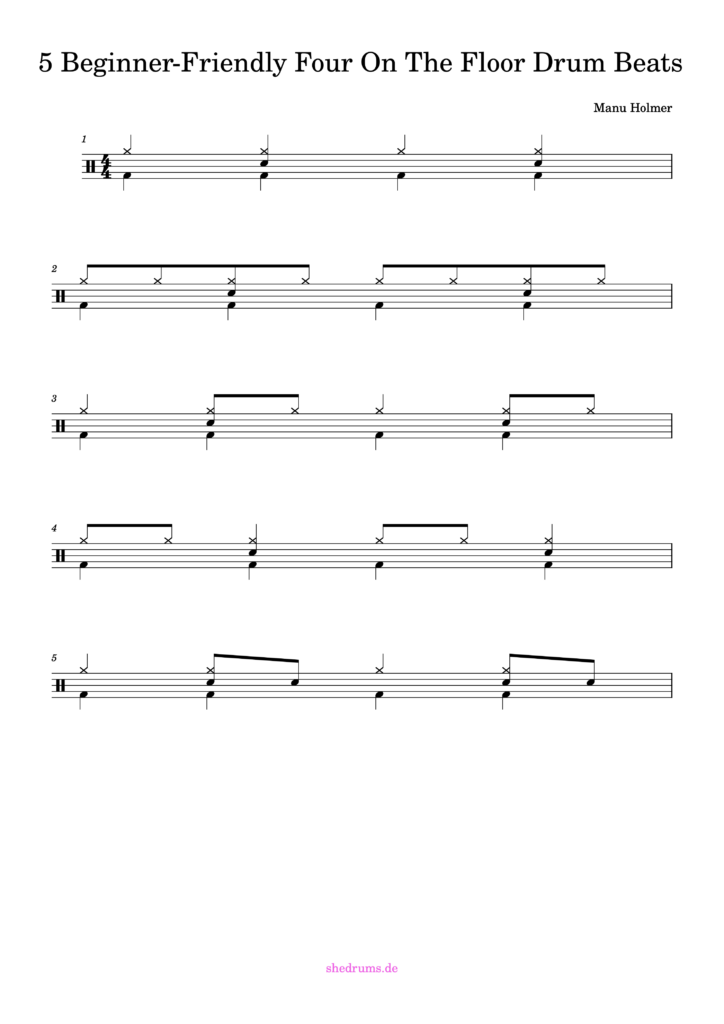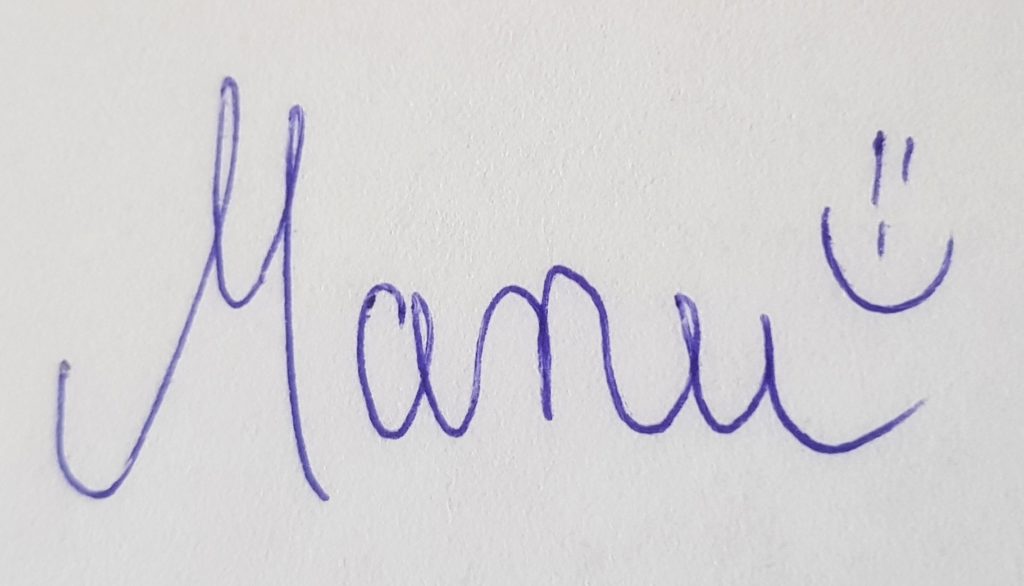Disclosure: This post may contain affiliate links (marked with *). If you click on these links and make a purchase, I may earn a small commission.

Four on the floor drum beats?
Ever heard of them?
You better have, because they are one superb addition to your drumming library!
They not only sound cool but are also fun and versatile to play.
Basically, you can use them in various musical situations.
That’s why we’re going to look at 5 four on the floor drum beats for beginners today.
Free PDF notes with all the grooves included. 🙂
What Is A Four On The Floor Drum Beat?
A four on the floor drum beat basically is a groove that’s defined by its kick pattern:
You play a bass drum stroke on each quarter note of the 4/4 bar.
The cymbal or snare pattern can vary.
This characteristic makes the four on the floor powerful to use in rock songs.
However, it’s also a fabulous groove basis for swing or pop.
And:
When playing a drum solo, the kick on all quarter notes adds some more drive to it.
Free Four On The Floor Drum Beats PDF

As you can see, each beat is written in 4/4.
You always play a kick on the full quarters which is the main characteristic of a four on the floor groove.
If you do change other parts of it, however, you get some tasty variations of it.
We’ll come to them later.
To start off, let’s take a look at a classic four on the floor beat.
1. Make It All Quarter Notes!

Just like each bar in this drumming guide, this groove is written in the 4/4 time signature.
It contains four
- kicks,
- snare and
- hi-hat strokes.
Please make sure to play every note simultaneously.
Don’t flam!
Also, practice in different tempos ranging, from
- slow to
- medium and
- fast.
I also recommend recording yourself while practicing.
If you don’t have an electronic drum kit with this function, a smartphone will do the trick.
2. The “Standard” Four On The Floor Groove

This beat is one that most beginner drummers learn.
Disco, anybody?
It’s quite similar to the standard rock beat, but with two added kicks on 2 as well as 4.
What’s crucial again is to not flam the snare and bass drum you’ll play simultaneously.
Make sure that you play them at the same time.
If you can change the eighth note hi-hat pattern to quarter notes again, you get our first beat.
By doing so, you can make the disco groove sound a little
- lighter or
- heaver,
depending on your way of playing the drum set.
3. Get Creative With The Hi-Hat – Part A

Basically, our third four on the floor drum beat is identical to grooves 1 and 2.
If you look closely, however, you’ll notice a significant difference:
It’s the hi-hat pattern, changing from quarter to eighth notes and vice versa.
This can be tough to play for beginner drummers, so make sure to start practicing slowly.
I also recommend practicing with the click or counting the bar, if this helps you.
Don’t rush, and take your time to carefully arrange your hands.
4. Spice Up Your Hi-Hat – Part B

Please take a look at beats 3 and 4 now.
Can you spot the difference?
Yes, the hi-hat part has changed again.
You play it in reverse.
This might sound like a small change, but it actually matters a lot.
Can you hear it?
5. Adding More Snare To Your Four On The Floor Drum Beat

The last drum beat I’d like to explain today will remind you of our first groove.
Just the snare is different now.
Instead of quarter notes, you play two eighths.
This might remind you of the famous twist Ringo Starr played in Twist And Shout.
And if it doesn’t, that’s perfectly fine as well. 🙂
Groove 5 again can be a challenge for your limb independence.
For this reason, make sure to start practicing at a tempo that enables you to drum
- accurate,
- relaxed and
- aware of what you’re doing.
And of course:
Have fun practicing our 5 beginner-friendly four on the floor drum beats!
Cheers,

